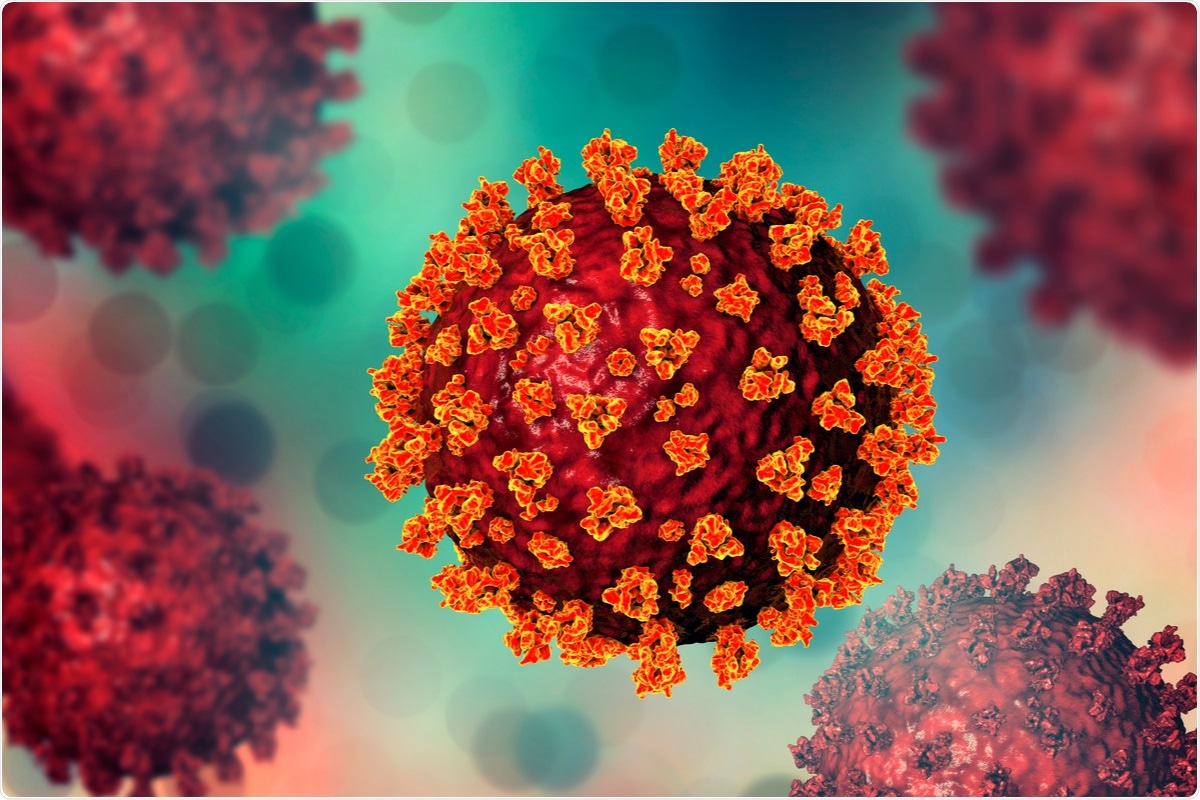The novel severe acute respiratory syndrome coronavirus 2 (SARS-CoV-2), which was first detected in December 2019 in Wuhan, China, is the causal agent of the ongoing coronavirus disease 2019 (COVID-19) pandemic. It is the third documented case this century of an animal coronavirus spilling over to humans and resulting in a major outbreak.
The potential for the contamination of human skin by SARS-CoV-2 virions can play a key role in the transmission of respiratory viruses, but little is known about the physico-chemical processes governing virus-skin interactions.

Mode of transmission of respiratory coronaviruses
The transmission of respiratory viruses like SARS-CoV-2 typically involves the release of virus-containing aerosols and droplets from infected individuals when they cough, sneeze, breathe or speak. These may then infect others via direct mechanisms (e.g., inhalation of aerosols) or indirect mechanisms (e.g., contact with the virus-containing droplets deposited onto materials). Reaerosolization after deposition, such as shaking a contaminated blanket, is another means of indirect transmission.
The indirect transmission mechanism has been documented in several studies, and human skin-virus interactions play a key role in this mechanism. Some key factors to be considered are the adhesion strength of the virion to human skin, the virion’s hydration upon adhesion, and whether it retains its integrity or not post-adhesion. Currently, there is a lack of understanding of the physico-chemical features of the interaction between coronaviruses and different surfaces. However, new research has been published on the bioRxiv* preprint server that documents the molecular details of the interaction between the human skin and SARS-CoV-2.
A new study
The virus interacts with the environment with the help of its spike protein (S) that protrudes from its envelope. The research team considered atomistic molecular dynamics simulations of the interactions between S and the human skin. Human skin is, of course, a complex surface and, hence, the scientists considered two cases – (i) clean skin without hair and sebaceous glands and (ii) skin covered by an oily waxy layer (sebum).
In the first case, the exposed surface of the skin corresponds to the outermost layer of the epidermis, which is also known as the stratum corneum (SC). The researchers studied the interaction of S with “oily skin” and “clean skin” surfaces. Scientists note that the surfaces of both types of skin have different molecular organizations (e.g., the ability to build hydrogen bonds). They also considered simulations of wet skin by placing a drop of water on each surface.
Overall, the researchers performed four sets of simulations – wetting simulations of the two skin models and their interaction with the SARS-CoV-2 spike protein. In addition, as a reference, a simulation of the interaction of S with a phosphatidylcholine (POPC) was also performed. To reproduce physiological skin temperature, the temperature was set at 305K, and the CHARMM36 force field was used, which includes parameterization of proteins, lipids, and general organic molecules.
Main results
The simulation results show striking differences between the two skin types. In the case of clean skin, S adsorbs, keeping its long axis almost parallel to the lipid surface. This aids in maximizing the contact between the spike and the surface of the stratum corneum. In the case of oily skin, the spike protein retains its perpendicular orientation with the host’s receptor-binding domain (RBD).
Further, the case of hydration of the spike protein is also different in the two cases. In the case of clean skin, scientists observed a complete wetting of the stratum corneum bilayer. This could compete with the tendency of the spike protein to remain hydrated, which could, in turn, influence the orientation of S over the stratum corneum. In the case of oily skin, the spike protein was maintained inside a hydration droplet that was formed on the top of the sebum layer. These results demonstrate that there is a much smaller contact angle for a water droplet on stratum corneum when compared to sebum.
The scientists observed a strong interaction of S with ceramides in SC and triglycerides in sebum. The number of hydrogen bonds between S and the skin molecules is also much higher in the former case. Overall, the results imply that the interactions with sebum will maintain the integrity of the hydrated SARS-CoV-2 spike. In the case of clean skin, a disruption of the virus’s integrity is possible.
Some limitations
In this study, the scientists considered only the S1 subunit of the spike glycoprotein and not the entire virus envelope. This may impact the potential change in orientation of the S protein and lead to a possible rupture between S1 and S2 subunits. A second limitation is the omission of some skin aspects from the model, such as rugosity, porosity, etc. However, research that addresses these limitations is underway.
*Important notice
bioRxiv publishes preliminary scientific reports that are not peer-reviewed and, therefore, should not be regarded as conclusive, guide clinical practice/health-related behavior, or treated as established information.
- Domingo, M. and Faraudo, J. (2021). Interaction between SARS-CoV-2 spike glycoprotein and human skin models: a molecular dynamics study. bioRxiv 2021.07.13.452154; doi: https://doi.org/10.1101/2021.07.13.452154, https://www.biorxiv.org/content/10.1101/2021.07.13.452154v1.
Posted in: Medical Science News | Medical Research News | Disease/Infection News
Tags: AIDS, Contamination, Coronavirus, Coronavirus Disease COVID-19, Cough, Epidermis, Glycoprotein, Hair, Hydration, Lipids, Pandemic, Protein, Receptor, Research, Respiratory, SARS, SARS-CoV-2, Severe Acute Respiratory, Severe Acute Respiratory Syndrome, Skin, Spike Protein, Syndrome, Virus

Written by
Dr. Priyom Bose
Priyom holds a Ph.D. in Plant Biology and Biotechnology from the University of Madras, India. She is an active researcher and an experienced science writer. Priyom has also co-authored several original research articles that have been published in reputed peer-reviewed journals. She is also an avid reader and an amateur photographer.
Source: Read Full Article
